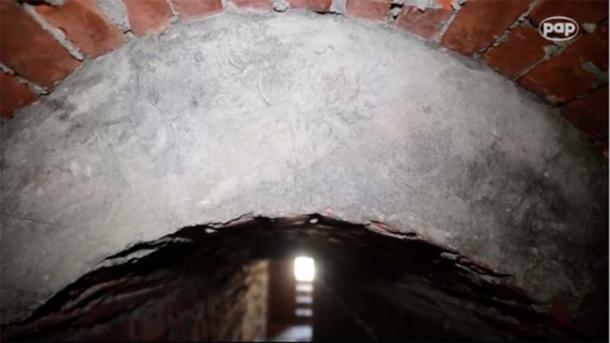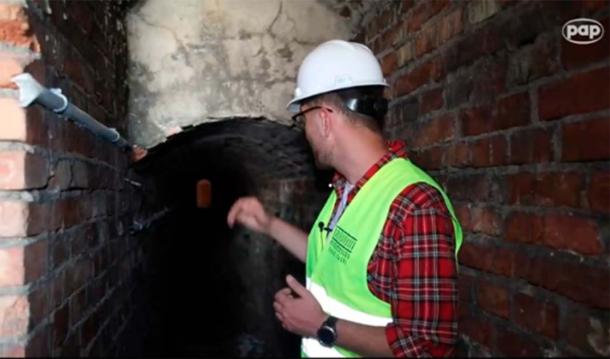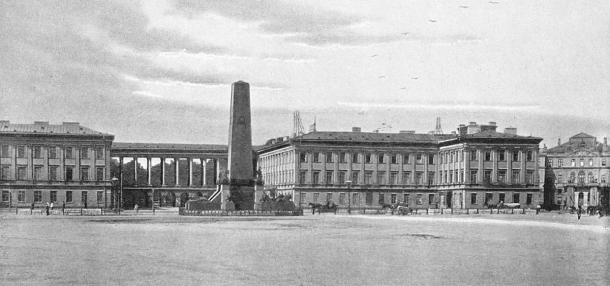
Saxon Palace in Warsaw Contains a Secret 45-Meter-Long Tunnel Underneath Its Ruins!
Tragically destroyed during the Nazi offensive in World War II, the 17th century Saxon Palace in Warsaw is a prominent historical site. Archaeological work being carried out at the site and its remnants have revealed the presence of a mysterious 45-meter (147.6 ft) long tunnel under the ruins of the old palace, which is a whopping 4 meters (13.1 ft) deep! The tunnel has been described as “the most mysterious place on Piłsudski Square in Warsaw”.
A Complete Surprise: A Secret Military Passageway
Pałac Saski company spokesman Sławomir Kuliński explained to Science in Poland (PAP), that the tunnel is not on any configuration or architectural plans they had, and is thus a complete surprise. In very good condition, he speculates that it was probably constructed in the early 1930s for the purpose of military intelligence. Digging through the rubble filling the passageway, they found coins, ornaments and pottery pieces.
- Sacrificial Treasure Trove of Bronze Age Artifacts Found in Peat Bog
- 1,000-Year-Old Chamber Burial on Polish Island Reveals Rare Treasures
“The place where we are now was the Polish Army command, and military intelligence was located in the southern wing. The tunnel was supposed to enable them to quickly transfer reports and information. The tunnel also had technical functions. It contained a telegraph cable and a system of heating and irrigation pipes for both wings of the palace,” explained Kuliński.
The tunnel's bricks were sourced from the Wawrzyna brickyard, as indicated by the branded marks on the bricks. Additionally, on the recently applied plaster, an unidentified builder etched the year 1933 along with an eagle, sans its crown.

The year 1933 was carved onto newly applied plaster. A screenshot of the video. (Science in Poland)
The tunnel extends to the cellars dating back to the Morshtyn period within the southern section of Saxon Palace. These cellars originally served as storerooms, and during the interwar period, they played a crucial role, as messengers raced to deliver military intelligence reports to the generals, reports Arkeonews. The tunnels were fitted with a telegraph cable, heating system, and water pipes.

A screenshot from the Science in Poland video, showing a view of the tunnel. (Science in Poland)
The Saxon Palace: A History of Varied Functions and Regime Changes
According to the State Archives in Warsaw, the origins of the Saxon Palace date back to the 1660s, when it was originally constructed as a private residence for Stanisław Herakliusz Lubomirski, a Polish nobleman. However, it didn't become a royal residence until the 1720s.
Over the course of the 1700s, the building underwent expansions and adaptations to accommodate various functions, though it was famously renowned for its Baroque-style architecture, characterized by ornate decorations and a grand façade.

The Saxon Palace of Warsaw, 1841-1894, before it was destroyed by German forces in World War II. (Public domain)
In the 18th century, the palace was purchased by the Saxon Elector Augustus II the Strong, who used it as his royal residence in Warsaw. It was during this time that the palace became associated with the Saxon name. Throughout its storied history, the palace has served as the quarters for Polish military staff, housed a foreign affairs ministry, hosted restaurants and shops, and at one point, even functioned as a high school in the early 1800s, as reported by Radio Poland.
It briefly served as the headquarters of the Russian Imperial Army in the first half of the 19th century. Tragically, the Saxon Palace met its demise during World War II when Nazi German forces, occupying Poland at the time, deliberately destroyed the building in 1944, shortly after the Warsaw Uprising movement's attempt to overthrow the occupation had failed, as stated in records from the state archives.
After the demolition of Brühl's Palace during the 1944 destruction of Warsaw, the area surrounding it was cleared only down to ground level in the aftermath of World War II. The remaining rubble was flattened, and the site was transformed into a lawn, gradually becoming overgrown with trees and shrubs. For nearly eight decades, the majority of this area held a mystery, except for a small fragment of one of the annexes (facing the Saxon Garden), which was explored by archaeologists in 2006, reports The Miami Herald.
- 7,000-Year-Old Ritual Site Unearthed in Poland
- A Polish Stonehenge? Discovery of New Burial Mounds May Rewrite History
In early June 2023, efforts began to unveil the secrets hidden beneath this space. The area was initially cordoned off and carefully inspected by sappers to ensure the absence of unexploded ordnance.
Archaeologists are currently conducting excavations at the site, unearthing a remarkable array of artifacts, including coins, ornaments, medallions, and vessels adorned with decorations or bearing manufacturer's signatures. So far, they have uncovered nearly 46,000 such items! The planned timeline for the restoration and re-commissioning of Brühl Palace, the Saxon Palace buildings, and neighboring tenement houses is set for the year 2030.
Top image: Archaeologists have uncovered a mysterious 45-Meter tunnel under the 17th Century Saxon Palace in Warsaw. Screenshot from Science in Poland's video. Source: Science in Poland
By Sahir Pandey
References
Altuntas, L. 2023. In Poland, a 45-meter-long mysterious tunnel found under the ruins of the Saxon Palace. Available at: https://arkeonews.net/in-poland-a-45-meter-long-mysterious-tunnel-found-under-the-ruins-of-the-saxon-palace/.
Gorcyzca, A. 2023. Mysterious tunnel found under Saxon Palace ruins. Available at: https://scienceinpoland.pl/en/news/news%2C97928%2Cmysterious-tunnel-found-under-saxon-palace-ruins.html.
Pflughoeft, A. 2023. Secret tunnel — with key purpose — uncovered beneath palace ruins in Poland. See it. Available at: https://www.miamiherald.com/news/nation-world/world/article278317033.html.















